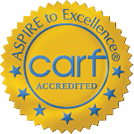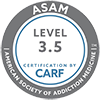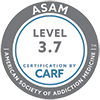While alcohol and heroin are two of the most commonly abused substances, several other substances, both legal and illicit, can lead to addiction. We review below seven substances that can cause addiction and that often require professional treatment to stop using.
- Alcohol
Alcohol, socially and legally accessible to millions, presents a unique challenge. The 2019 National Survey on Drug Use and Health highlighted the prevalence of alcohol use disorders. Like tobacco in most states, the legal status of alcohol can underplay its addictive dangers and numerous health risks. When trying to decipher if you or someone you love is dealing with alcoholism, look for the following:
– Being able to drink large amounts with little to no effect, causing an increase in consumption in order to feel something
– Experiencing extreme flu-like withdrawal symptoms when quitting abruptly
– Failing to fulfill responsibilities or maintain healthy social ties due to drinking
– Binge drinking each time alcohol is accessible - Marijuana
The growing acceptance of marijuana, fueled by its legalization in certain states, has led to shifting perceptions of the plant and its psychoactive effects. However, this doesn’t change the potent probability of marijuana addiction developing in certain populations. The New York Times confirms that nearly 6% of American teens and adults suffer from weed addiction. It’s also widely acknowledged that the increasing potency of marijuana over the past decade has contributed to its ability to lead to addiction and dependence. Marijuana addiction can look like the following:
– Withdrawal symptoms like insomnia, irritability, anxiety, feelings of depression, and a weakened appetite result when you stop consuming cannabis cold turkey
– You try to quit but always cave in to the urge
– Your marijuana use directly and negatively affects social connections or familial relationships
- Painkillers
Prescription opioid-based painkillers like Vicodin and Oxycontin, often prescribed for pain management, have contributed heavily to public health crises in the U.S. Many people who are prescribed these drugs become addicted to them even when following the prescription. They only realize the depth of their addiction when attempts to cease consumption result in difficult-to-manage withdrawal symptoms. Painkiller addiction looks like this:
– Using the prescription even after it’s expired or when all pain has ceased
– Lying or exaggerating about pain to doctors so you can get the prescription renewed, and/or going to different doctors to receive multiple prescriptions
– Slurred speech and slowed verbal response time in conversations
– Spending less time enjoying hobbies, time with family and friends, and exercise - Cocaine
Cocaine has recently caused a sharp increase in overdose-related deaths. Its grip is far-reaching, impacting lives across age groups and demographics. The allure of crack cocaine, additionally, which is more potent and cost-effective, further worsens the addiction crisis. Cocaine addiction can manifest in the following ways:
– Sudden, unprecedented displays of aggression or hyperactivity
– Moods swing that range from euphoria to total depletion, irritability, and annoyance
– Paranoia, changes in appetite and personality, and/or tremors Heroin - Heroin
Heroin addiction is marked by excruciating withdrawal symptoms, making recovery a monumental challenge. There’s also the issue of fentanyl, also found in medications like Actiq®, Duragesic®, and -Sublimaze®. Signs of heroin or fentanyl use and addiction can include:
– Constant scratching, weight loss, confusion, and bruising or blisters resulting from needle use
– Uncharacteristic social withdrawal and extreme changes in personality, behavior, and physical appearance - Benzodiazepines
It’s a mouthful: benzodiazepines. Present in drugs like Xanax and Valium, benzodiazepines are prescribed for anxiety. They do what your brain can’t seem to do: regulate and stabilize your moods. While legal when prescribed, patients can become dependent on them for their mood-regulating power. The danger lies in their profound impact on brain chemistry, with withdrawal potentially proving fatal without proper medical care. Symptoms of benzodiazepine addiction can look like the following:
– An increase in risky behavior like driving or going into work while sedated
– Uncharacteristic poor judgment, blurred vision, and constant drowsiness
– Strange or forced attempts to get more of the prescription from family, friends, or various doctors. - Barbiturates
Barbiturates, commonly known as sleeping pills or sedatives, offer a seemingly harmless solution to sleep disorders and anxiety-induced insomnia. However, as tolerance builds, addiction takes root. The mind-altering effects of these pills perpetuate the cycle of addiction. Just like benzodiazepines, you begin to depend on them to enter into sleep cycles that your brain should naturally be carrying out. You might be addicted to sleeping pills if:
– You appear drunk or intoxicated under their influence
– Your sleep cycle becomes much heavier—a lot of effort is required to wake you
– Sudden withdrawal symptoms include tremors, hallucinations, or fever
Managing Addiction with St. Gregory Recovery Center in Iowa
No matter what the substance, when someone is addicted to it, they cannot quit using it even when they try. This is where behavioral and faith-based treatment centers like St. Gregory Recovery Center come into play. We offer scientifically sound approaches to sobriety like cognitive behavioral therapy (CBT) and human-centered detox services, at the same time that we provide tools for managing substance use triggers throughout recovery. Speak with our admissions department today to learn more about taking control of your addiction.







